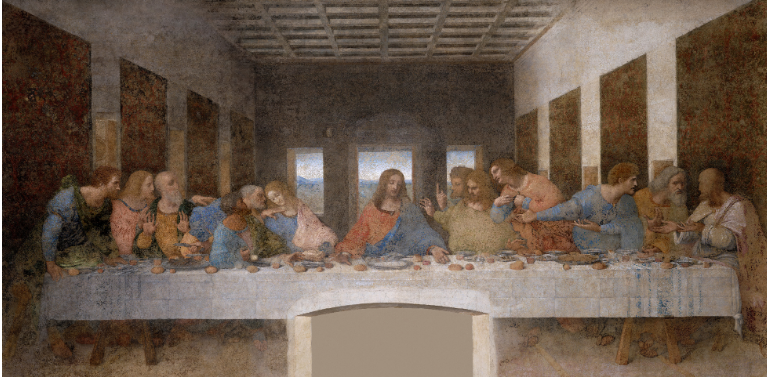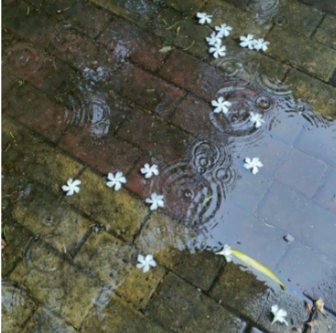My Hometown, My Nowhere: On The Rise of the Midwestern Gothic Aesthetic by Alexandra Rae
- Breanna Crossman
- May 13, 2024
- 6 min read

B&W Portrait: NXJ Studios
Collage: Alexandra Rae
I remember the looks on their faces, their disbelief in my world, the grayness of it all. “How can you live here?” they asked me, their curiosity nothing short of morbid. We were passing through a factory situated in one of the many small towns the three of us had driven through that day. The smokestacks were massive, wider than three school buses lined up in a row, their pipe bodies the color of shark skin. No gasses bled out of them that day - it was Sunday. Even the biggest offenders of EPA laws needed to rest. I was used to seeing them. My friends were not.
“Well…do you see why I want to leave?” I said from the backseat. They murmured in agreement. That’s not all I wanted to tell my two friends as we drove out of Ohio from the weekend getaway we had spent there, drinking wine and watching reality television in a forest-enclosed cabin. I wanted to tell them how I lived there. Like this: fist raised to sky to rebel or rejoice or reclaim the God churchgoers told me to believe in, depending on the day; midnight trips to Walmart; bare feet bitten by bugs in uncut grass; corn fields as my mountains; swinging onto the low branch of my neighbor’s pine tree until axed after I moved away; stomach burned from the waterslide’s blue plastic in the backyard; Jesus by the highway; morning doves and lawn mowers; waiting forever in the Dunkin line - because what else was worth waiting for?; driving aimlessly through the streets of my suburbia, knowing I would find my way back home, here in this nowhere.
The Midwest used to be invisible, a kind of nowhere the rest of the world knew was somewhere. Now, when I google “Midwest,” my search results are no longer “places to visit” or “is it real.” The region of the U.S. I grew up in is associated with “midwest gothic core,” “Ethel Cain midwest aesthetic,” and “Midwest Princess” (based on an album I, as a self-proclaimed Midwest Princess, truly love). What my friends saw on the drive back to our urban college campus was the Ohio I knew to be true. The farmers, the yards littered with abandoned bicycles and car parts, crows’ feet curled around telephone poles. What the Internet categorizes as the midwestern lifestyle is a glamorized, aestheticized snapshot of a place that used to be considered no place at all.
For those of us looking to reimagine our midwestern pasts as something worth romanticizing, we turn to artists like Ethel Cain for the soundtrack to our Ohioan lives (or Indiana, North Dakota, Missouri, any of the other twelve states part of our lost land). Cain was born in Florida, so while most of her music speaks to a lived - or partially fictional - experience in a Southern Gothic homeland, the imagery of destitute small towns and churches deeply resonates with the daughters of Cain in the Midwest. As Lydia Wilford writes in her article for Polyester Zine “Daughters of Cain, Sharp Objects & How the Recession Gave Rise to the Southern Gothic”, Southern Gothic “celebrates crucifixes, fading wallpaper, one-room schoolhouses and gauche, technicolour images of Jesus Christ.” These icons of this nuanced version of the South are part of the culmination of this aesthetic, which, as Wilford points out, is an aesthetic that “understands the world to be dying.” Death is an important thematic element within Cain’s album Preacher’s Daughter, where she sings about possessing death’s power (“I’ll kill before and I’ll kill again” on “Family Tree) and the throes of death itself (“God is telling you and I there is death, for all of us” from a preacher’s sermon on “Strangers”). Cain’s ruminations on death, in all its forms, correspond with the Southern Gothic “middle of nowhere” place her fictionalized persona and songs identify with. Just like the Midwest’s pockets of nothingness, it is the death of what once was that gives way to the death of everything that could be. Even in the idealized versions of our towns, the nothing transpires over everything.
So why now? Why the rise in blurry photos of crosses and empty prairies? Capitalism, of course.
As more niche aesthetics are discovered and popularized on social media platforms like TikTok, users feel inclined to partake in consumerism in order to buy their way into being an “acid pixie” or “new Spanish Catholic girl.” The right marabou robe could make you worthy of joining “virgo’s tears.” But, as Wilford writes in her article, the Southern Gothic strays away from other consumable niche aesthetics as “it’s much harder to marketise the abject.” So it is more than our current economic slump that has pushed the Midwest and Southern Gothic to the forefront of desirable aesthetics - it is the need to crawl our way out of our current nightmarish realities into something that brings us comfort, and even strength. By embracing death and desolation, you are ready for it when you can no longer choose it.
On the other end of the midwestern spectrum lies Chappell Roan, a musical artist from Missouri who changed queer pop (and lives) with her debut album The Rise and Fall of a Midwest Princess. Here, you won’t find Biblical lore or excerpts of Sunday sermons. Gay mermaids, supernovas the color of red wine, and pink ponies are the core of this fourteen-track project, offering a different kind of romanticization to midwestern life. Where Ethel Cain sinks deep into the Gothic mud of the South and Midwest, curating a persona that is just as dark (if not darker) than her music’s origins, Chappell Roan creates a soundtrack fit for lesbian Barbie to pack up her pink cowgirl hats and prance her way out of her small town - all the way to Manhattan. In an interview with Time, she says she loves the “value and the culture and music [in the Midwest]...I was born in a trailer park, and I think like that whole aesthetic you can’t really get if you’re not from there.” Perhaps that is her ultimate goal with her music: for non-midwesterners to “get” this region. There is more to the Midwest than farmlands and churches. As Roan puts it in her interview, “gay people are everywhere.” Drag queens, queer artists, girls who want to go dancing at the “Pink Pony Club” are all part of the Midwest. For those like the auburn-haired leader of this club, embracing their small town past through a queer lens is how the Midwest earns its way into their identity.
I believe the Midwestern Gothic aesthetic has risen in popularity from three kinds of aesthetic seekers: the “daughters of Cain” looking to subjugate themselves to the melancholic shadows of their past to reclaim the haunted woods and religious motifs that raised them; the “Midwest Princesses” wanting to tether themselves to their small town upbringings from a new queer & glitterified perspective; and those from outside the Midwest pursuing a different form of self-expression, one that is centered on uprooting a once-oppressive culture and turning it into a homeland for anyone & anything.
Between Columbus and Cincinnati on I-71, there’s a billboard that says “HELL IS REAL.” The “H” is painted red. I’ve never seen it myself, but I know it’s there. I can feel the same sentiment everytime I cross the border back into Ohio. Aestheticized or not, the fear of God is instilled within the core of the Midwest. So too is the importance of agriculture, one pump gas stations, rust, mildew, stargazing from truck beds, knowing you are nowhere. Through the aestheticization of hometowns like mine, I’ve been able to see the beauty of the Midwest. The beauty of it is real, but so is the horror beneath its soil. Like this region, it is possible to be something that is both desired and feared. If the rise of the Midwestern Gothic aesthetic has shown us anything, it is this.
Hell is real. But so am I.
Sources:
Daughters of Cain, Sharp Objects & How the Recession Gave Rise to the Southern Gothic — Polyester (polyesterzine.com)
Alexandra Rae (she/her) is prose writer & editor based in the U.S. She deeply admires the works of genre-bending artists like Lauren Slater and Nick Flynn and seeks to push the boundaries of narrative within her own work. Alexandra also loves women-centered stories that destroy stereotypes and conventional portrayals of female characters. She edits for Outlander Zine and posts her poetry & prose on instagram (@theresonationofalexandra).



Comments